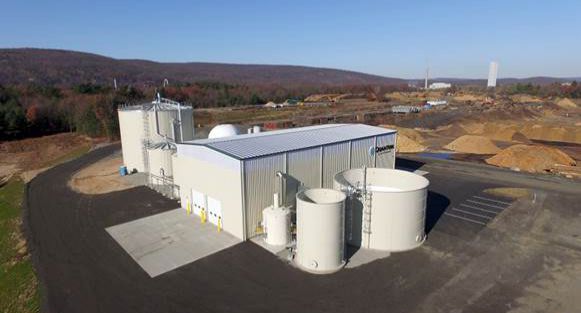40,000 TPA Organic Waste Anaerobic Digestion Plant Online in Connecticut
Waste Management World May 2, 2017
Quantum Biopower has opened a 40,000 tonne per year mixed organic waste anaerobic digestion plant incorporating Global Water Engineering’s GWE RAPTOR technology.
Southington, Connecticut based bioenergy firm, Quantum Biopower has opened a 40,000 tonne per year mixed organic waste anaerobic digestion plant incorporating, Global Water Engineering’s GWE RAPTOR™ technology.
The plant serves the central Connecticut region and uses the GWE rapid anaerobic digestion system to produce enough biogas to generate 1.2 MW of electricity and up to 5.6 tonnes a day of dry bio fertiliser.
The company said that the plant will help the State meet its renewable energy goal of generating 27% of the state's electricity from renewable energy resources by 2020.
The Southington plant’s biogas production of more than 420,000 Nft3 (about 12,000 Nm3) a day at 62.5% methane (CH4) is said to be equivalent to 8000 kg a day of fuel oil, or more than 3000 tonnes of the fossil fuel a year, projected to be worth over $A10 million in the plant’s first decade of service.
The plant began accepting food waste in December 2016, in preparation for electricity production this year.
“An enormous advantage of this type of green energy is that it transforms an environmental problem into a profitable resource,” commented Ian Page, vice president Global Water & Energy - a subsidiary of Global Water Engineering.
“Rather than having to pay to dispose of organic trash – or having it rot in landfills or create community odor issues and environmental hazards – this process converts virtually any organic waste into a profitable asset,” he continued.
Page also noted that the firm has completed a RAPTOR waste to energy plant in Canada and is currently completing another in the Caribbean that converts food waste and a form of grass into energy.
“As well as profit and environmental benefits, this technology provides consistent and reliable base load power, which is not always possible with alternative green energy technologies, such as wind and solar. It is a proven winner,” he concluded.